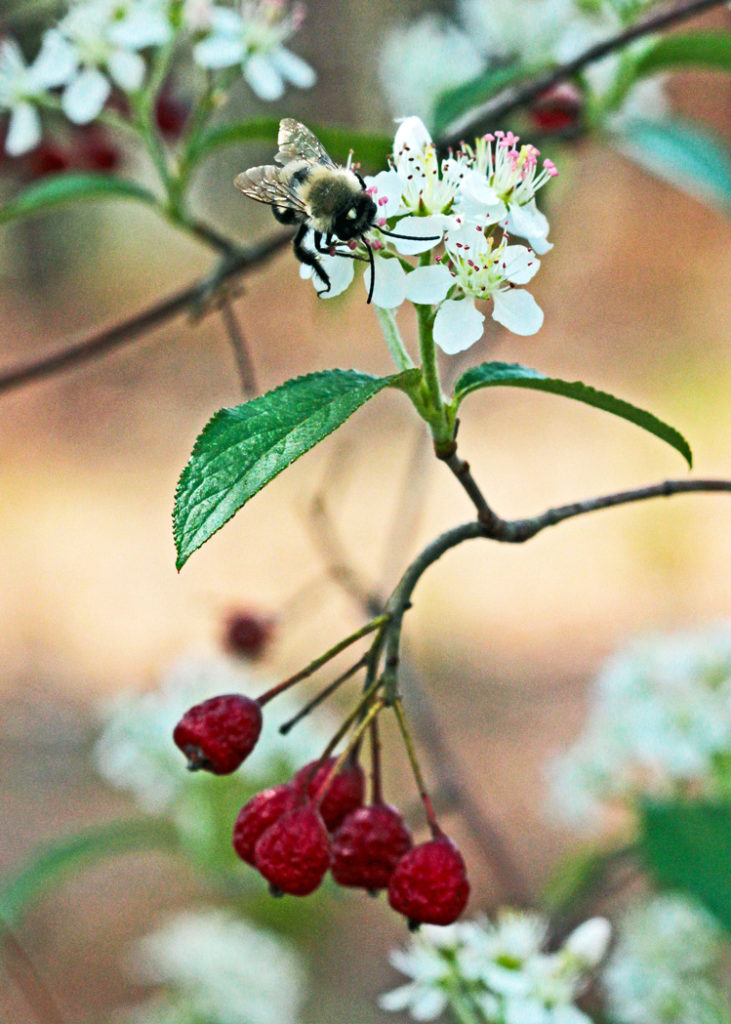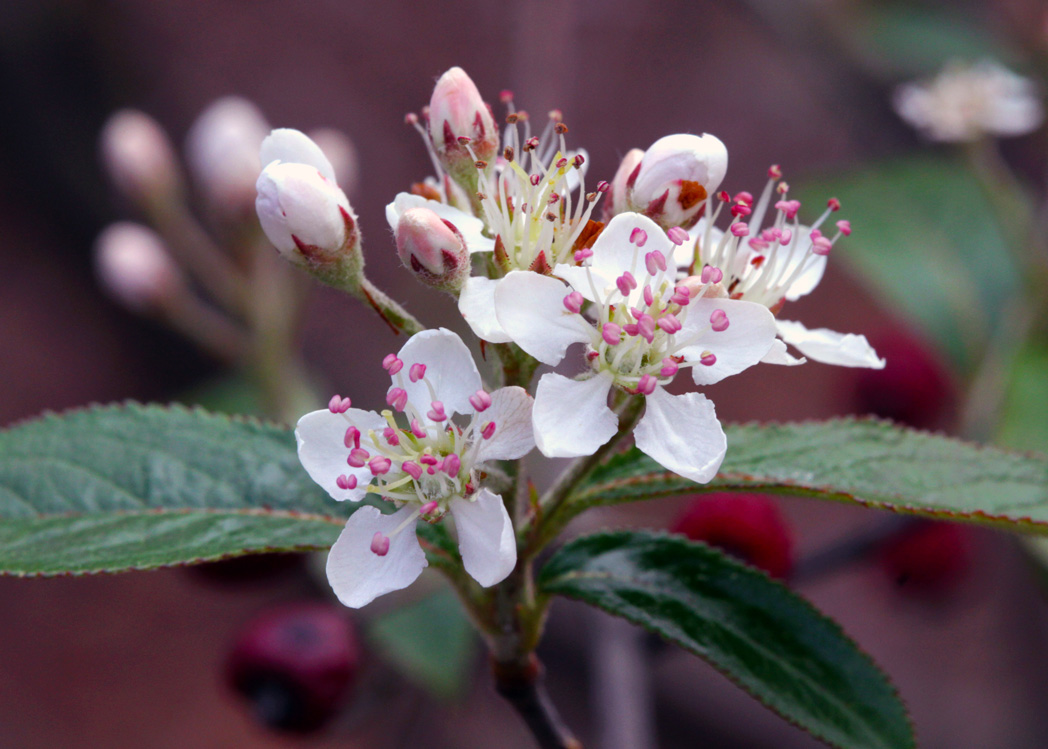Red chokeberry
Red chokeberry (Aronia arbutifolia) by Will Stuart, Lady Bird Johnson Wildflower Center. Click on terms for botanical definitions. View post as a PDF
Red chokeberry is a deciduous shrub found in moist to wet pine flatwoods and along wetland and swamp margins. In late winter and spring, the plant is covered in a profusion of showy, sweet-scented blooms that attract a variety of pollinators, especially bees. In summer, flowers give way to a bounty of berries that persist well into fall. Although birds don’t care much for them, they may be eaten by deer, rabbits and other small mammals. Humans can eat them, too, but their taste is bitter and acidic. They are best made into jam, jelly, pie or wine. The fruits are high are in antioxidants.

Red chokeberry fruit and flowers by Will Stuart, Lady Bird Johnson Wildflower Center
Red chokeberry flowers are white with five petals, and have many yellowish-green filaments and yellow to dark pink anthers. They are born in flat-topped clusters. Leaves have a dark green upper surface, pale green underside and incised margins. They turn reddish-orange in fall. Stems are multi-branched and trunk-like. Bark may be flaky. Twigs and branches vary from rust-colored to purplish to brown. Seeds are born in small, pear-shaped pomes that turn bright red when mature.
The common name “chokeberry” is likely a reference to the fruit’s acrid taste.
Family: Rosaceae (Rose family)
Native range: Panhandle, north and central peninsula
To see where natural populations of Red chokeberry have been vouchered, visit florida.plantatlas.usf.edu.
Hardiness: Zones 8A–10A
Lifespan: Perennial, deciduous
Soil: Moderately dry to very moist acidic soils
Exposure: Full sun to light shade
Growth habit: 5–10’ tall, 3–5’ wide
Propagation: Cuttings, division, seed (stratify)
Garden tips:Despite being deciduous, Red chokeberry can add year-round interest to a landscape, with its abundance of spring flowers, changing leaf color, persistent fruit and interesting bark. It can be used as an ornamental specimen, but it spreads by suckering, so is best suited for naturalistic landscapes and restorations where it can form colonies. Suckers transplant easily. Red chokeberry will produce more flowers and fruit if planted in full sun.
Red chokeberry is occasionally available from nurseries that specialize in Florida native plants. Visit www.PlantRealFlorida.org to find a nursery in your area.

